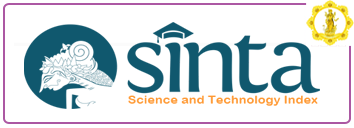KAWIN MASSAL/MAKANDAL MASSAL STUDI KASUS DI DESA SONGAN A DAN B KECAMATAN KINTAMANI, KABUPATEN BANGLI
DOI:
https://doi.org/10.25078/gw.v7i1.446Kata Kunci:
Mass marriageAbstrak
The most common marriage in Bali is the marriage of marriage (asking) by the man to the
woman's house. The cost of a marriage in this modern era is quite large due to several stages
such as mesedek (telling women), proposing marriage (taking) and marriage ceremony to
reception. Some things that cause the mass wedding ceremony in Songan are eloping, taking
more than one electricity, where the second, third and so on wives are celebrated with mass
marriage. Besides that, there are also couples who have not graduated from school to get
married, they die, and economic partners are weak. Before the mass wedding ceremony is held
in the Village Temple, the beakaon stages are first performed at their respective homes. The
stages of metipatbantalan (coming to a woman's house) for the deceased are usually carried
out after being disbursed by mepiuning / Nangiang Dewa Hyang to be invited to be invited to
the house of women with the symbol of the dagger or Daksina as befits a person who is still
living with the same process. The research problem formulation is (1) What are the Forms of
Mass Marriage in Songan, Kintamani, Bangli Villages? (2) Why Mass Marriage is conducted
in Songan, Kintamani, Bangli? ? Theories used are structural functionalist theory,
phenomenology theory and social change theory. The research method used is a qualitative
method. Mass marriages and non-mass marriages in Songan conducted at Bale Agung Temple
are declared valid if it has been witnessed by Tri Upasaksi (three witnesses) namely Bhuta
Witness, Manusa Witness, Dewa Witness. Implications of a Mass Marriage for a couple who
have been legally married in Songan have an impact on the obligation to pay or pay for
marriage to pay offspring or ceremonial and grief costs to the Adat Village.

















